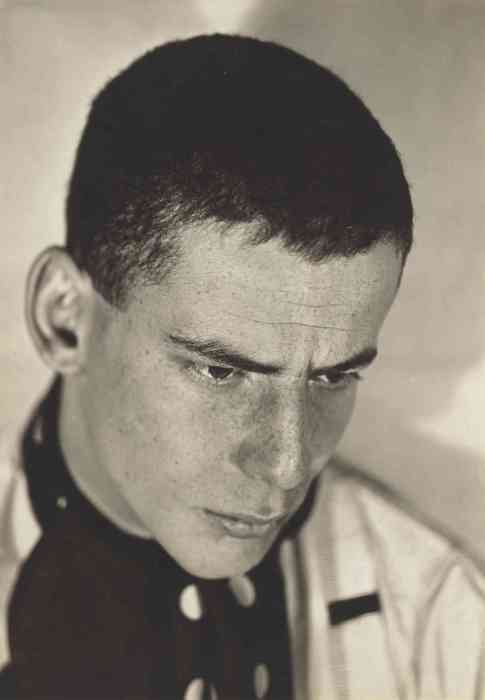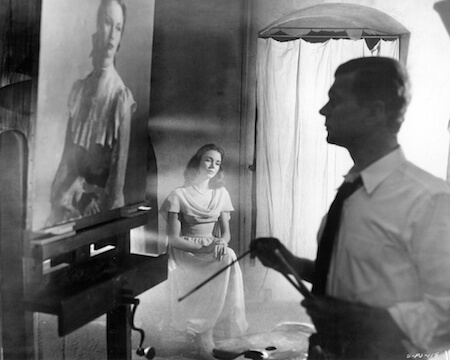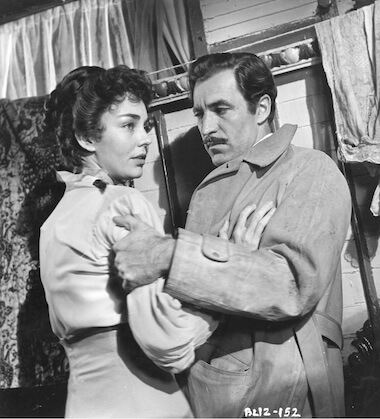120 DAYS BOOKS
BY DAVID NOH | Remember those paperback pulp gay porn novels that used to be semi-discreetly sold in drugstores and random magazine stands in the 1960s and early 1970s? They had deliriously suggestive covers and titles like “The Number on the John Wall,” “Chamber of Homos,” “Tailpipe Truckers, “ “Hot Asset!,” “The Male Maulers.”
No?
Well I do, and so does writer Maitland McDonagh, who has painstakingly amassed an impressive collection of them over the years and has now started her own imprint to republish and bring them to interested readers once more.
Her latest such effort is a handsomely produced double novel: “Man Eater,” by one Dick Jones (these authors almost always used pseudonyms), and “Night of the Sadist,” by Paul Laurie.
Unearthing important gay erotica, Dory Previn recalled, one mesmerizing Bennett sister
Admitting to me that for her a healthy interest in penises, straight or gay, was inevitably an inspiration, McDonagh added, “In the late 1980s, I saw some copies of these kinds of books in Times Square because I was there all the time seeing horror movies. There were also all the bookstores, so I started buying these old gay porn novels, just for the covers and kept on collecting them. But unlike most people who collect these books, because I’m a reader at heart, I read them. What I discovered in the wealth of information about them online was that a lot of collectors had no interest in what was inside the book and often had contempt for them, like “OMG, the books are trash but the covers are so camp!”
And I was thinking, “You’re kind of assholes, because, yes, some of the covers are great in a campy way, but some are quite beautiful.
“None of the artists signed the covers, apart from a guy named Adam. He was one of the more talented artists, but also completely unknown. Artists are harder to find than the writers — and they’re hard to begin with, because everyone worked under a pseudonym.
“Five years ago, I rekindled my interest in all this, and I started trying to track down the writers. I found about a half dozen, all of whom had ‘fessed up to their old identities: Dirk Banden and Richard Fullmer, who left Vernal, Utah after he graduated high school. Can you imagine being a Mormon in Utah and gay in the early 1960s? You had to pack up your stuff and go to San Francisco.
“There was a huge community of gay porn writers there. Victor Banis came from some huge hillbilly family and he wrote, under a pseudonym, these hilarious takeoffs on spy novels which revolved around superspy Jackie Holmes, who is gay, but his cover is that he’s a super-swish, so nobody ever thinks that he’s gonna be dangerous. He has a poodle named Sophie, whose teeth have been filed down to sharp points. Some company reissued a bunch of them and they’re hugely entertaining, fun, and smart, and he also wrote an autobiographical memoir called something like ‘Spine Broken, Small Creases,’ which is enormously entertaining.”
To reprint some of these titles, McDonagh started her company, 120 Days Books: “Of course, a De Sade reference, how could I resist? It’s been difficult. I don’t have this sense of corporate liability because the fact is I can’t find the writers. These publishing companies have been out of business for 30 years at least, so at this point, who really knows what the rights are? That’s why I was trying to track down the writers. I didn’t want to mess with their books because I have a sense of morals, being a writer myself.
120 DAYS BOOKS
“William Maltese started writing in the late 1970s and I ran into him on Facebook. He posted, ‘You know, there are some of us who are not grateful to see their books republished. I wrote back to him, ‘I assure you, I am not publishing the books of anybody who is still alive I can find. But I think a lot of these books are in danger of being lost and some of them are really good and some are kind of good, but very entertaining. I’m really looking to put them back into the public eye.’ We became pals and he wrote back, ‘Sorry I snapped at you, but you can see why I might be upset.’ There’s this automatic feeling of somebody poaching the rights of other writers.
“He wasn’t ashamed of his books, and he’s actually writing a series now about ‘The Stud Drakul,” with a hero who’s the heir to some enormous fabric fortune. He goes gallivanting around the world having endless sex with exotic men while doing business for his family’s company.
“The writer Victor Bannis is very fun, funny, and very normal. When the big boom of gay erotica began to kind of die in the 1980s when everything was hardcore and nobody wanted to read stories anymore, he started writing pulp westerns and sci fi, some 150 books. Kind of amazing.”
“There are a lot of cop and trucker novels, as well as rarities, like this one about Nazi porn, which is a surprisingly good book. But look at those swastikas on the cover! Is this a book I want to buy? But all of them are becoming harder to find. Most people didn’t save them, and some of them who did died and their relatives would see this huge box of porn books and they were out on the sidewalk in no time flat.
“My interest is not just a weird little kink. I think these books are really interesting. If nothing else, they are such portraits of the 1960s through the mid-1970s. Everything was changing what with gay lib, and it was easier for some than others. Sometimes just a matter of being five years older or younger could make an enormous difference in your experience of coming out and finding other gay men.”
(Learn more about McDonagh’s effort at https://www.facebook.com/120DaysBooksRediscoveringVintageGayErotica.)
Dory Previn (1925-2012) was one singer-songwriter of the 1970s I knew more by name than through any actual experience of her music. For me, she was primarily the one who wrote the songs for that indelible camp classic “Valley of the Dolls,” as well a being the woman, whose husband, composer and conductor Andre Previn, was stolen by a young Mia Farrow, after her failed marriage to Frank Sinatra.
Ms. Previn’s life was celebrated by singer Kate Dimbleby in her show, ‘Beware of Young Girls,” which I caught at 59E59 on January 2. That title happens to come from the song Previn wrote about her traumatic experience with Farrow, who, in the show, is a constant bête noir in Previn’s life. Indeed, watching Dimbleby — and the projected shot of Farrow on the wall behind her stage — I found myself musing more on Previn’s romantic rival than Previn herself. Previn’s life seemed to approximate a sort of Hollywood/ New York Greek tragedy, filled with betrayal, karmic retribution (given the whole Woody Allen brouhaha), and bloody, hard-won survival.
My wandering mind might also be blamed on the quality of the show itself, for as fascinating a subject as Previn is, she was not best served by Dimbleby’s weak vocals, choice of material (which took the form of too many similar ballads, flatlining the evening), missing context at random points, and spotty narration. Previn was reduced to little more than a dreary clinical case study of schizophrenia rather than represented as the fecund artist she actually was in life.
Previn, who lived to 86 despite a troubled medical history, wrote three Oscar-nominated songs, and, although Dimbleby’s haunting “Theme from Valley of the Dolls” was the evening’s most effective moment, she didn’t mention anything abut that film’s undying gay cult status. She sang “You’re Gonna Hear from Me,” and neglected to say that this was from Natalie Wood’s Gavin Lambert-penned “Inside Daisy Clover.” She never mentioned Previn’s other winsomely pleasing hit, “Come Saturday Morning,”(which she should have sung) or the fact that it was from Liza Minnelli’s “The Sterile Cuckoo.”
And a definite aura of cheese set in during Dimbleby’s rendition of “Lemon Haired Ladies,” when portraits of haphazardly chosen, anachronistic divas — Carole Lombard, Jean Harlow, Mae West! — flashed behind her, ending with, yes, Mia Farrow again, who’d already undergone vitriolic treatment with the show’s title song.
Joan Bennett goes Carmen Miranda in Archie Mayo’s “The House Across the Bay.” | UNITED ARTISTS
The Museum of Modern Art continues its performer-driven “Acteurism” series with Joan Bennett through the end of January. Bennett was the youngest of the three illustrious — and sometimes tragic — daughters of the great actor Richard Bennett. Described by George Cukor as the “prettiest” Bennett sister — there was the dazzlingly chic and thin diva Constance and Barbara, who drank rather than acted — Joan also possessed a natural understatement, which stood her in versatile good stead in a long career that stretched from the silent era to the '60s cult Gothic vampire soap opera “Dark Shadows.” She went from the most delectably ethereal blonde to a more dramatic brunette, which opened a new film world to her, appearing as an archetypal noir dame, especially for director Fritz Lang, in films including “The Woman in the Window” and “Scarlet Street.”
I really like two lesser-known titles that MOMA is screening. “I Met My Love Again” (1937) was Joshua Logan’s film directorial debut (with a small assist from Cukor), a modestly scaled, lyrical, and quite literate tale of the often rocky small town love between an initially innocent Bennett, who quickly becomes a scandalous woman of the world and single mom, and Henry Fonda, as an engagingly upright college professor. Bennett is radiantly blonde, totally ingratiating, and relatable, giving my favorite performance of hers. (Jan. 14-16, 1:30 p.m.)
“The House Across the Bay” (1940) features a sultrier brunette Bennett, showing the other, more delightfully hard-boiled and wisecracking side to her talents. She’s a nightclub singer who marries mobster George Raft and rats him out to the IRS so he’ll be thrown into jail, which she sees as a safe refuge from his criminal enemies. The underrated Archie Mayo directs this breezy, highly satisfying melodrama with a vivid, raunchy touch, and the cast includes the great Gladys George, Walter Pidgeon, Lloyd Nolan, Peggy Shannon, and June Knight, who originally introduced “Night and Day” on Broadway in “The Gay Divorce,” with Fred Astaire. (Jan. 21-23, 1:30 p.m.)
When I met the charming Bennett years ago, she fondly remembered “my beautiful wardrobe,” which was designed by the brilliant Irene, the greatest modern costume designer of her time, beloved by every major diva and a tragic figure who eventually jumped to her death at Hollywood’s Knickerbocker Hotel.
(The full schedule of “Acteurism” screenings is at moma.org/visit/calendar/films/1535.)
Contact David Noh at Inthenoh@aol.com and check out his blog at http://nohway.wordpress.com.

































